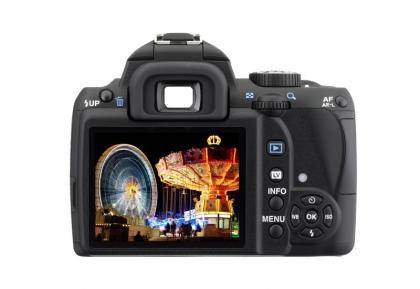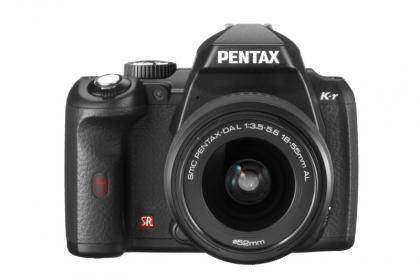
Pentax’s consumer SLRs used to trail behind models by Canon, Nikon and Sony, but that changed with the launch of the K-x in 2009. With blazing fast performance and very low noise, there were only a few minor niggles that kept us from giving it an unreserved recommendation.
The K-r reviewed here will sell alongside the K-x, which is still available for £400. There’s a £70 cashback offer on the K-r until 15 January 2011, which brings it in at £458. The list of improvements over the K-x make it well worth the extra £58: the screen is now 3in and 921,000 pixels, the battery compartment accepts either the supplied Li-ion or four AA batteries, while the optical viewfinder now shows the selected autofocus point. That’s pretty much all of our niggles crossed off.

There isn’t a huge number of physical buttons and dials, but those coming from a compact digital camera should feel at home. We particularly like how the range of the Auto ISO speed can be adjusted from 100-200 right up to 100-25600. It’s a common feature but here it’s within easy reach rather than being buried in the menu.
This is a highly customisable camera, with white balance fine tuning and the ability to set noise reduction levels for each ISO speed. There’s highly effective shadow and highlight recovery plus lots of creative tricks, such as automatic high dynamic range (HDR) capture, cross processing and toy camera simulation.

There are some smart operational touches too. It’s possible to record JPEGs but save the last shot retrospectively in RAW format – ideal for unexpected photographic gems. We also like the way the live view preview does a dramatic animated zoom as the shutter button is half pressed. This inspires confidence in live view’s contrast-detect autofocus, which happens to be much quicker than on Nikon and Canon SLRs.
The K-x was a fast performer but the K-r is even better. Continuous mode set off at 5.8fps in our tests, slowing to 3.8fps after 34 frames for JPEGs and to 2fps after 13 frames for RAW images (tested with a Sandisk Extreme III SDHC card). It was extremely nippy in general use, with responsive autofocus and just 0.3 seconds between JPEGs and 0.6 seconds between RAW shots. Full-power flash shots were just 2.3 seconds apart. Activating certain digital processing options slowed the camera right down, though. That’s forgivable for the creative effects, but lens distortion and chromatic aberration correction processing was so slow as to be unusable.